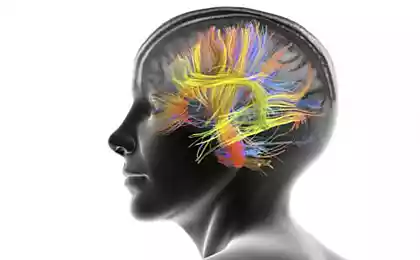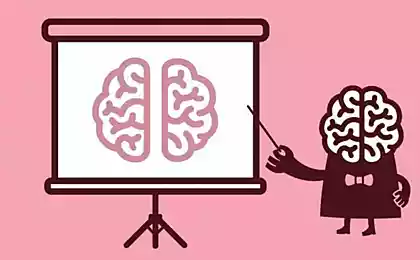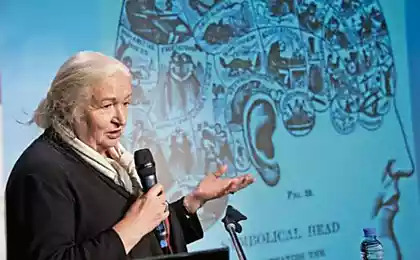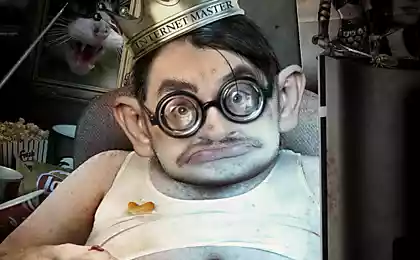513
The adolescent brain has a special structure
Something about neyrosozrevanii
People go through two stages of development in childhood and adolescence, and the latter is defined as the transition to adulthood, beginning with puberty and ending (at least in theory) a successful independence from parents. And although the body is at a stage between childhood and adulthood is almost formed, the brain is still developing - changes and grows. Its development does not end, at least up to 20 years, sometimes it happens later.
It is obvious that the behavior of a teenager influenced by many factors, including genetics, childhood experiences and socialization. But it is the dynamics of the brain plays a key role.
Paradoxically, adolescents often exhibit the worst decision-making skills than children. In addition, many adolescents compared with adults physically stronger, faster and more resistant to disease. Some teens even reason and think better than adults.
At the same time people are in their teens are going through a huge amount of personal dramas, they are characterized by vulnerability, impulsiveness and risk appetite. Teens are at increased risk of mortality compared to children: the death rate from injury for adolescents aged 15 to 19 years old is six times higher than for children from 10 to 14 years. In addition, the greatest number of criminals obtained from young men.
Scientists believe that this is due to a process called neyrosozrevanie in which the brain goes through the critical stages of their development. In particular, the frontal lobe "mature" perhaps the last compared with other areas of the brain. This area is responsible for the performance of functions such as planning, attention, motivation, working memory and impulse control.
Neyrosozrevanie can be divided into two global process - the maturation of the frontal lobes and the strengthening of ties between the regions of the brain. During this period, the cortical area of the brain and neural connections grow. Surprisingly, while the gray matter in the brain, consisting of nerve cells and nerve fibers, is fully developed in 11 years in girls and 12 in boys. Since then, the rarely used due reduced - so the brain becomes more integrated and work efficiently.
The surviving neural connections better communicate through myelination - the process of providing insulation for the nerve connections that allow nerve impulses travel throughout the brain faster.
These processes - synaptic overproduction and pruning excess myelination - increase the brain's ability to efficiently transfer information between regions. Nerve connections between the tonsils (part of the brain responsible for processing emotions such as fear, aggression, anxiety and vigilance), and bark also increased - in this period, young people reach the so-called emotional maturity.
via factroom.ru

People go through two stages of development in childhood and adolescence, and the latter is defined as the transition to adulthood, beginning with puberty and ending (at least in theory) a successful independence from parents. And although the body is at a stage between childhood and adulthood is almost formed, the brain is still developing - changes and grows. Its development does not end, at least up to 20 years, sometimes it happens later.
It is obvious that the behavior of a teenager influenced by many factors, including genetics, childhood experiences and socialization. But it is the dynamics of the brain plays a key role.
Paradoxically, adolescents often exhibit the worst decision-making skills than children. In addition, many adolescents compared with adults physically stronger, faster and more resistant to disease. Some teens even reason and think better than adults.
At the same time people are in their teens are going through a huge amount of personal dramas, they are characterized by vulnerability, impulsiveness and risk appetite. Teens are at increased risk of mortality compared to children: the death rate from injury for adolescents aged 15 to 19 years old is six times higher than for children from 10 to 14 years. In addition, the greatest number of criminals obtained from young men.
Scientists believe that this is due to a process called neyrosozrevanie in which the brain goes through the critical stages of their development. In particular, the frontal lobe "mature" perhaps the last compared with other areas of the brain. This area is responsible for the performance of functions such as planning, attention, motivation, working memory and impulse control.
Neyrosozrevanie can be divided into two global process - the maturation of the frontal lobes and the strengthening of ties between the regions of the brain. During this period, the cortical area of the brain and neural connections grow. Surprisingly, while the gray matter in the brain, consisting of nerve cells and nerve fibers, is fully developed in 11 years in girls and 12 in boys. Since then, the rarely used due reduced - so the brain becomes more integrated and work efficiently.
The surviving neural connections better communicate through myelination - the process of providing insulation for the nerve connections that allow nerve impulses travel throughout the brain faster.
These processes - synaptic overproduction and pruning excess myelination - increase the brain's ability to efficiently transfer information between regions. Nerve connections between the tonsils (part of the brain responsible for processing emotions such as fear, aggression, anxiety and vigilance), and bark also increased - in this period, young people reach the so-called emotional maturity.
via factroom.ru
























